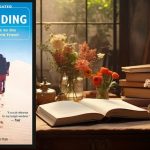The Art of Travel” by Alain de Botton: A Journey Through the Depths of Wanderlust
In his seminal work “The Art of Travel,” acclaimed author and philosopher Alain de Botton invites readers on a profound exploration of the allure and significance of travel. With eloquence and insight, de Botton delves into the complexities and nuances that underlie our desire to explore new places, seeking to uncover the true artistry behind each journey. From the mundane aspects of airport queues to the awe-inspiring beauty of foreign landscapes, de Botton’s words transport us into a world where travel becomes not just an escape but a means for personal growth.
Drawing from his own experiences as well as those of artists, poets, and thinkers throughout history, de Botton skillfully unveils the hidden layers that make traveling such a transformative experience.
Overview of “The Art of Travel” by Alain de Botton
“The Art of Travel” by Alain de Botton is a philosophical exploration of the transformative power of travel. The book is divided into nine chapters, each focusing on different aspects of the travel experience. Throughout the book, de Botton combines personal anecdotes with insights from famous writers and artists to offer a unique perspective on why we travel and how it can shape our lives.
One key theme in “The Art of Travel” is the contrast between expectations and reality. De Botton argues that often our idealized visions of a place are shattered upon arrival, leading to disappointment and frustration. However, he also suggests that these moments can be opportunities for self-reflection and growth. By examining our reactions to unfamiliar environments, we can gain insight into ourselves and challenge our preconceived notions.
Another important theme explored in the book is the role of nature in travel experiences. De Botton describes how encounters with awe-inspiring landscapes or natural wonders can evoke powerful emotions within us. He highlights how these moments of connection with nature can provide solace, inspiration, and a sense of belonging in an increasingly disconnected world.
Overall, “The Art of Travel” offers readers an introspective journey through various destinations while encouraging them to reflect on their own motivations for traveling and what it means to truly appreciate the beauty around us.
Plot Summary: Key events and narrative structure
In “The Art of Travel” by Alain de Botton, the plot revolves around the author’s exploration of travel and its impact on our lives. The book is divided into nine chapters, each focusing on a different aspect of travel. Throughout the narrative, de Botton takes us on a journey that combines personal anecdotes with philosophical reflections.
The first chapter sets the stage by introducing the idea that we often idealize travel as an escape from our daily routines and troubles. De Botton then takes us to the airport, where he reflects on how airports are designed to make us feel excited about our upcoming journeys. From there, he delves into various destinations such as Barbados and Madrid, discussing themes such as anticipation, curiosity, and disappointment.
As the book progresses, de Botton explores different elements of travel through historical figures like Wordsworth and Van Gogh. He examines their experiences in places like Lake District in England and Arles in France to highlight how travel can inspire creativity and provide solace. In each chapter, de Botton weaves together his personal insights with thought-provoking observations about human nature and our relationship with unfamiliar environments.
“The Art of Travel” offers a unique perspective on why we travel and what it means to explore new places. Through its engaging narrative structure and key events that span across time periods and locations, readers are taken on a captivating journey of self-discovery and contemplation about the transformative power of travel.
Themes Explored: Reflections on travel and its impact
In “The Art of Travel” by Alain de Botton, the author takes readers on a journey through various destinations while reflecting on the impact of travel. One theme explored in the book is the concept of anticipation and how it shapes our experiences. De Botton delves into the idea that oftentimes, our expectations for a trip are so high that reality can never fully live up to them. This disconnect between what we imagined and what actually happens can lead to feelings of disappointment or disillusionment. By exploring this theme, de Botton encourages readers to manage their expectations and find joy in small moments rather than solely focusing on grand expectations.
Another theme explored in “The Art of Travel” is the role of landscapes and their effect on our emotions and well-being. De Botton emphasizes how certain environments can evoke powerful emotions within us, whether it be awe at natural wonders or a sense of tranquility in serene settings. Through vivid descriptions and personal anecdotes, he highlights how different landscapes can elevate our moods or provide solace during difficult times. By exploring this theme, de Botton prompts readers to take notice of their surroundings more intentionally during their travels, allowing themselves to be deeply affected by the beauty and power of nature.
Overall, “The Art of Travel” offers thought-provoking insights into the impact travel has on us as individuals.
Philosophy of Travel: De Botton’s unique perspective
In “The Art of Travel,” Alain de Botton offers a unique perspective on the philosophy of travel. Through a series of engaging essays, de Botton explores various aspects of travel, from anticipation and departure to exoticism and returning home. One key theme in the book is the idea that our expectations often don’t align with reality when it comes to travel. De Botton suggests that we are frequently let down by our preconceived notions of what a destination will be like, as well as by the photographs and postcards that often shape our ideas about a place.
Another important theme in “The Art of Travel” is the concept of “the sublime.” De Botton delves into how certain landscapes can evoke feelings of awe and transcendence, offering us an escape from our everyday concerns. He reflects on famous works of art inspired by nature and ponders why we are drawn to these images and locations. Ultimately, de Botton argues that travel can provide us with moments of profound beauty and insight, reminding us to appreciate the world around us.
Lessons Learned: Insights for the modern traveler
“The Art of Travel” by Alain de Botton is a philosophical and introspective exploration of the act of traveling. The book consists of several essays that delve into various aspects of travel, including the anticipation, the experiences encountered during the journey, and the ways in which we remember and understand our trips.
One key theme in “The Art of Travel” is the concept of anticipation. De Botton argues that often our expectations for a trip are too high, leading to disappointment when reality does not meet our fantasies. He suggests that by managing our expectations and finding wonder in everyday moments, we can enhance our travels and find joy in unexpected places.
Another important lesson from this book is the idea that travel can be a means to self-discovery. De Botton encourages travelers to reflect on their experiences and engage with their surroundings in a deeper way rather than merely ticking off tourist attractions from a checklist. By allowing ourselves to be vulnerable and open-minded while traveling, we can learn valuable insights about ourselves and gain new perspectives on life.
“The Art of Travel” offers valuable lessons for modern travelers by reminding us to approach our journeys with curiosity, manage our expectations, embrace spontaneity, and seek personal growth through reflection and engagement with different cultures.
Critiques: Analyzing strengths and weaknesses
When analyzing the strengths of “The Art of Travel” by Alain de Botton, one cannot overlook the author’s ability to seamlessly blend personal anecdotes with philosophical musings. Through his own travel experiences and encounters with various landscapes and cultures, de Botton offers readers a unique perspective on the concept of travel itself. His insightful reflections on the reasons behind our desire to explore and escape from our everyday lives are thought-provoking and make for engaging reading.
However, despite these strengths, there are also some weaknesses in de Botton’s approach. One critique is that at times his writing can come across as overly intellectual and abstract, making it challenging for readers who prefer a more accessible style. Additionally, while de Botton touches upon key themes such as the influence of art on our perception of landscapes or the impact of anticipation on our enjoyment of travel, he sometimes fails to provide concrete examples or practical advice to apply these insights to one’s own travels. This lack of practicality may leave some readers wanting more guidance or actionable steps to enhance their own experiences.
In conclusion, “The Art of Travel” by Alain de Botton showcases both strengths and weaknesses in its exploration of why we travel and how it affects us. While the blending of personal anecdotes with philosophical insights is a notable strength that keeps readers engaged throughout the book, some may find the writing too abstract or lacking in practical application.
Conclusion: Final thoughts on the book’s significance.
In conclusion, “The Art of Travel” by Alain de Botton provides a thought-provoking exploration of the significance of travel in our lives. Through his engaging storytelling and insightful analysis, de Botton delves into the various reasons why we are drawn to travel and how it impacts our perspectives on life.
One significant aspect highlighted in the book is the notion that travel offers an escape from our daily routines and allows us to experience new cultures, landscapes, and people. De Botton argues that this break from familiarity can awaken our senses and provide a fresh outlook on life. By immersing ourselves in different environments, we gain a deeper understanding of ourselves and the world around us.
Furthermore, “The Art of Travel” emphasizes the importance of finding beauty in both the mundane and extraordinary aspects of our journeys. De Botton suggests that cultivating an appreciation for small details can transform even ordinary occurrences into moments of profound significance. Whether it be admiring a vibrant sunset or reflecting upon historical landmarks, de Botton encourages readers to actively engage with their surroundings and seek meaning in every experience.
Overall, “The Art of Travel” serves as a reminder for us to embrace curiosity and venture beyond our comfort zones. It urges us to recognize the transformative power travel holds in shaping who we are as individuals. Through its captivating narratives and philosophical insights, this book invites readers to embark on their own personal journey towards self-discovery through travel.












